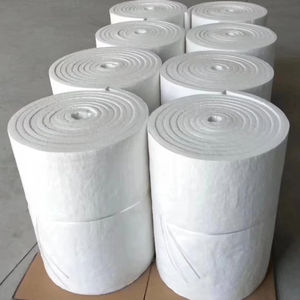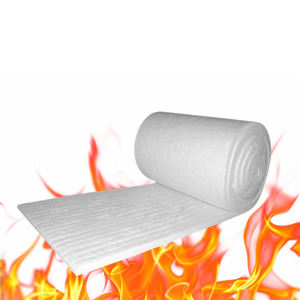Professional industry ceramic supplier, silicon nitride, silicon carbide, aluminum nitride and any other kinds of ceramics.
PRODUCT PARAMETERS
Description
Overview of High-temperature insulation for furnaces, 1600°C, 1700°C, 1800°C alumina refractory ceramic fiber board
High-temperature insulation for furnaces, 1600°C, 1700°C, 1800°C alumina refractory ceramic fiber board is a lightweight, high-temperature insulation material composed primarily of alumina-silica. It is manufactured through a melting and spinning or blowing process, resulting in a flexible, wool-like textile. This material is engineered to provide exceptional thermal management, conserving energy and protecting equipment in extreme temperature environments across various industries.
Features of High-temperature insulation for furnaces, 1600°C, 1700°C, 1800°C alumina refractory ceramic fiber board
-
Excellent Thermal Stability: Withstands continuous operating temperatures up to 1260°C (2300°F) and higher for certain grades, with minimal shrinkage.
-
Low Thermal Conductivity: Provides highly efficient insulation, reducing heat loss and improving energy efficiency.
-
Lightweight & Low Heat Storage: Offers low thermal mass, enabling rapid heat-up and cool-down cycles for improved process control and energy savings.
-
Thermal Shock Resistance: Highly resistant to damage from rapid temperature changes.
-
Excellent Flexibility & Resilience: Can be fabricated into blankets, boards, papers, and textiles to fit complex shapes and applications.
-
Good Chemical Stability: Resists attack from most corrosive agents, except strong alkalis and hydrofluoric acid.
Specification of High-temperature insulation for furnaces, 1600°C, 1700°C, 1800°C alumina refractory ceramic fiber board
These alumina refractory ceramic fiber boards take care of severe heating system warmth. They shield accurately at 1600 ° C, 1700 ° C, and 1800 ° C. Pick the board matching your furnace’s maximum operating temperature.
The boards are made primarily from alumina (light weight aluminum oxide). This gives them fantastic warmth resistance. Higher temperature level boards need even more alumina. The 1800 ° C grade has the most alumina content. This makes it manage the hardest conditions.
These boards are solid however lightweight. They have an uniform density. This thickness is thoroughly managed. It makes sure regular efficiency. The boards resist heat flow quite possibly. Warm does not pass through them easily. This maintains heating system temperature levels stable. It saves significant power.
The boards warm up and cool quick. This is because they keep little heat themselves. It makes heater temperature level adjustments quicker. It improves process control. This likewise reduces stress and anxiety on furnace cellular linings.
Installment is simple. Cut the boards to size with regular saws. Fit them tightly with each other. This lessens warmth leaks. The boards withstand most chemicals found in furnaces. They are also difficult versus physical bumps and use.
The boards stay strong even after long exposure to heat. They don’t shrink much over time. This keeps the insulation layer undamaged. It avoids voids where warm could leave. Lengthy life span suggests less downtime.
Make use of these boards in many high-heat locations. They function well for heater linings, backup insulation, and thermal baffles. They are good in kilns and warmth therapy equipment too. They supply a secure, effective thermal barrier.
Applications of High-temperature insulation for furnaces, 1600°C, 1700°C, 1800°C alumina refractory ceramic fiber board
High temperature heating systems require unique insulation. Common materials stop working over 1600 ° C. Alumina refractory ceramic fiber boards manage these extreme heats. They work reliably at 1600 ° C, 1700 ° C, and even 1800 ° C. These boards are made from ceramic fibers adhered together. Alumina is the essential component. It gives the board its heat toughness.
These boards are essential for lining commercial heaters. They cover the heater walls and roof coverings. This keeps the extreme warmth inside the working chamber. Warm loss is lessened. This saves significant energy. Gas expenses drop. The heater operates much more effectively.
The boards likewise shield the furnace structure. They serve as a thermal barrier. The outer steel covering remains much cooler. This protects against warping and damage. Heating system life is expanded. Expensive repairs take place much less commonly.
These boards act as outstanding back-up insulation. They are put behind dense firebricks. This arrangement boosts total insulation. It allows thinner furnace wall surfaces. Heating system design becomes more small. Installation is less complicated.
High temperature doors and checking out ports require insulation. Alumina fiber boards are ideal below. They secure the openings effectively. Warm getaway is blocked. Operators are more secure from radiant heat. The boards additionally work well for heat shields. They protect sensitive devices near the heating system.
Development joints are important in heating system construction. Products expand and acquire with temperature level adjustments. Alumina fiber boards are made use of in these joints. They compress and absorb movement. The heating system lining keeps intact. Splits are stopped. Downtime is reduced.
These boards use great thermal shock resistance. They handle fast heating and cooling down cycles well. This is important for batch furnaces. Furnaces cycle on and off frequently. The insulation stays secure. Efficiency doesn’t break down.
Making use of these boards brings real benefits. Energy savings are clear. Tools lasts longer. Heater efficiency enhances. Production becomes a lot more dependable. Upkeep expenses reduce.
Company Profile
Tanki New Materials Co.Ltd. focus on the research and development, production and sales of ceramic products, serving the electronics, ceramics, chemical and other industries. Since its establishment in 2015, the company has been committed to providing customers with the best products and services, and has become a leader in the industry through continuous technological innovation and strict quality management.
Our products includes but not limited to Aerogel, Aluminum Nitride, Aluminum Oxide, Boron Carbide, Boron Nitride, Ceramic Crucible, Ceramic Fiber, Quartz Product, Refractory Material, Silicon Carbide, Silicon Nitride, ect. please feel free to contact us.

Payment Methods
T/T, Western Union, Paypal, Credit Card etc.
Shipment Methods
By air, by sea, by express, as customers request.
5 FAQs of High-temperature insulation for furnaces, 1600°C, 1700°C, 1800°C alumina refractory ceramic fiber board
People ask about our high-temperature insulation boards often. These alumina ceramic fiber boards handle extreme heat. They work well at 1600°C, 1700°C, even 1800°C. Here are answers to common questions.
What temperatures do these boards actually handle? Our boards are rated for continuous use at 1600°C, 1700°C, or 1800°C. The rating depends on the specific alumina content. Always check the exact product specs. The 1800°C board handles the most intense heat. It needs special manufacturing.
How do you install these fiber boards? Installation is straightforward. Cut the boards to size using regular saws. Wear a mask to avoid dust. Fit the pieces tightly together inside the furnace. You can use ceramic pins or special adhesives to secure them. Good installation prevents heat leaks.
Why choose these over other insulation? These boards offer big advantages. Heat doesn’t pass through them easily. This saves a lot of energy. They are very light compared to firebricks. This reduces stress on your furnace structure. They install much faster than brick linings too. Time is money.
Are these boards safe? Yes, they are safe when handled correctly. They contain no asbestos. They are made from man-made ceramic fibers. Follow standard handling procedures. Wear gloves and a dust mask during cutting and fitting. This minimizes any skin or breathing irritation. Once installed, they are stable.
How long do these insulation boards last? Lifespan depends heavily on the furnace environment. Constant high temperatures are fine. Chemical vapors or physical abrasion shorten life. The highest temperature boards (1800°C) are more resistant. They cost more initially. They often last longer under severe conditions.
REQUEST A QUOTE
RELATED PRODUCTS
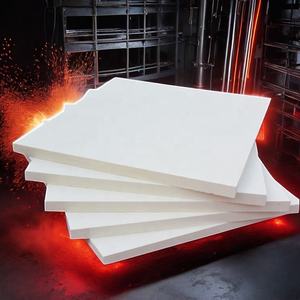
High-temperature heating Ceramic Fiber Chamber for muffle furnaces.

Industrial design ceramic Fiber felt, aluminum silicate fiber, and other insulation materials, blanket products.

Refractory 1260°C biosoluble insulation ceramic fiber sheets for high-temperature furnaces, dimensions 25x500x1000mm.
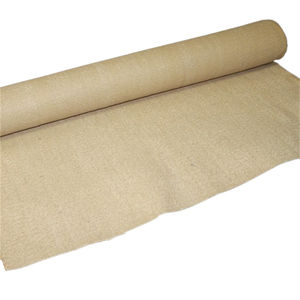
Ceramic Fiber Blanket for High-Temperature Kiln Linings, Excellent Thermal Shock Resistance
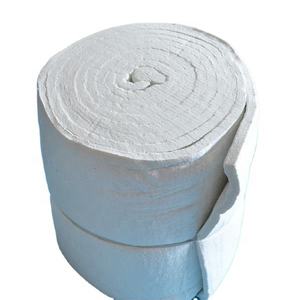
High-temperature ceramic fiber board, 1600°C polycrystalline mullite PCW ceramic fiber board
